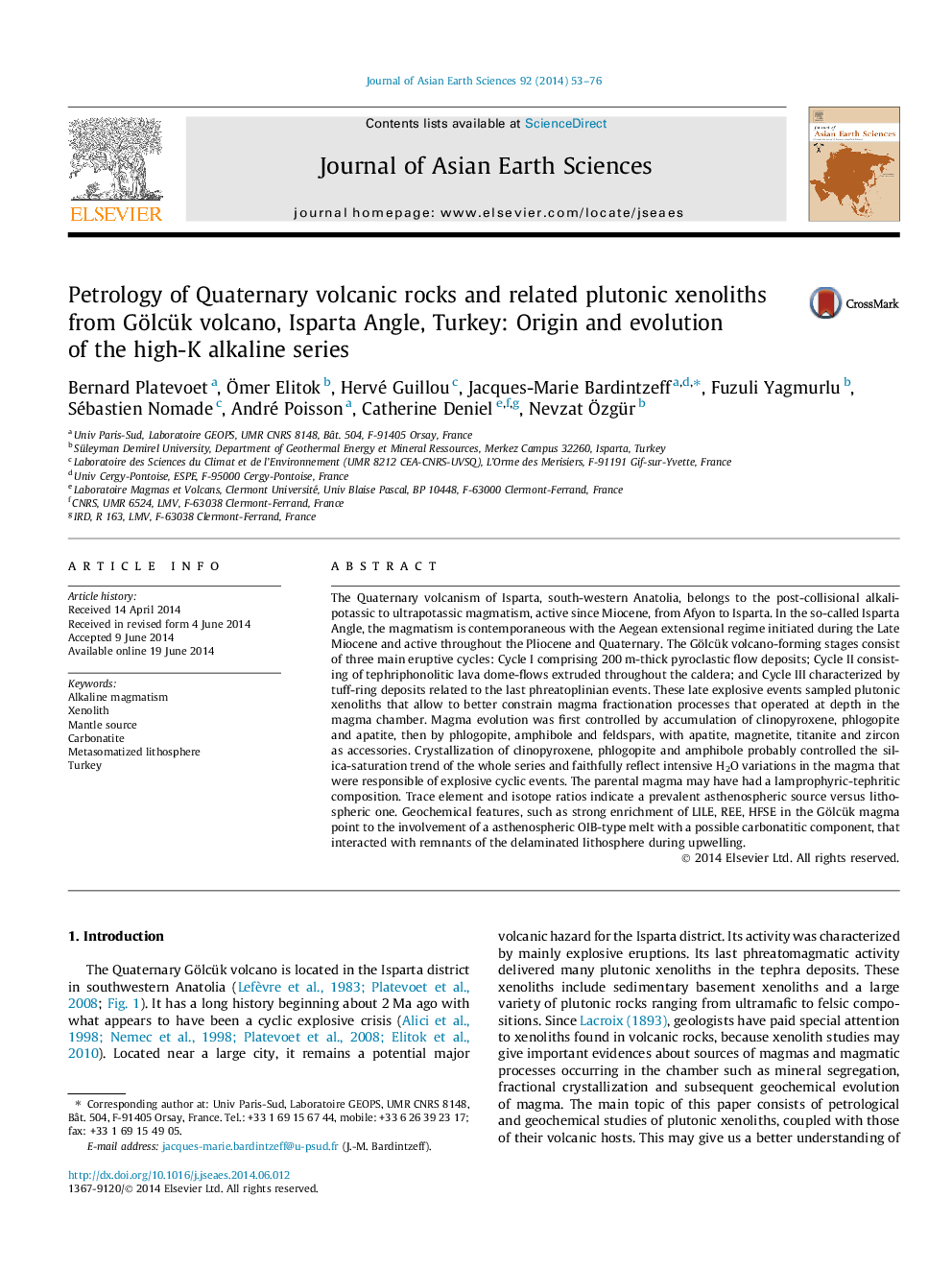| کد مقاله | کد نشریه | سال انتشار | مقاله انگلیسی | نسخه تمام متن |
|---|---|---|---|---|
| 4730521 | 1640376 | 2014 | 24 صفحه PDF | دانلود رایگان |

• Xenoliths and host volcanic rocks have a similar mineralogy and great geochemical affinities.
• Xenoliths evidence fractionation/sorting processes in the crustal chamber.
• Silica-saturation of residual liquids is controlled by the hydrous/anhydrous mineral ratio.
• The mica-amphibole succession seems to be responsible of triggering explosive events.
• Trace elements and isotopic compositions argue for a prevalent asthenospheric source.
The Quaternary volcanism of Isparta, south-western Anatolia, belongs to the post-collisional alkali-potassic to ultrapotassic magmatism, active since Miocene, from Afyon to Isparta. In the so-called Isparta Angle, the magmatism is contemporaneous with the Aegean extensional regime initiated during the Late Miocene and active throughout the Pliocene and Quaternary. The Gölcük volcano-forming stages consist of three main eruptive cycles: Cycle I comprising 200 m-thick pyroclastic flow deposits; Cycle II consisting of tephriphonolitic lava dome-flows extruded throughout the caldera; and Cycle III characterized by tuff-ring deposits related to the last phreatoplinian events. These late explosive events sampled plutonic xenoliths that allow to better constrain magma fractionation processes that operated at depth in the magma chamber. Magma evolution was first controlled by accumulation of clinopyroxene, phlogopite and apatite, then by phlogopite, amphibole and feldspars, with apatite, magnetite, titanite and zircon as accessories. Crystallization of clinopyroxene, phlogopite and amphibole probably controlled the silica-saturation trend of the whole series and faithfully reflect intensive H2O variations in the magma that were responsible of explosive cyclic events. The parental magma may have had a lamprophyric-tephritic composition. Trace element and isotope ratios indicate a prevalent asthenospheric source versus lithospheric one. Geochemical features, such as strong enrichment of LILE, REE, HFSE in the Gölcük magma point to the involvement of a asthenospheric OIB-type melt with a possible carbonatitic component, that interacted with remnants of the delaminated lithosphere during upwelling.
Journal: Journal of Asian Earth Sciences - Volume 92, 1 October 2014, Pages 53–76